Adov, L., Pedaste, M., Leijen, Ä., & Rannikmäe, M. (2020). Does it have to be easy, useful, or do we need something else? STEM teachers‚Äô attitudes towards mobile device use in teaching.
Technology, Pedagogy and Education,
29(4), 511-526.
https://doi.org/10.1080/1475939x.2020.1785928.

Ainley, M., & Armatas, C. (2006). Motivational perspectives on students’ responses to learning in virtual learning environments. In J. Weiss & J. Nolan & J. Hunsinger & P. Trifonas (Eds.),
The international handbook of virtual learning environments. pp 365-394. Springer:
https://doi.org/10.1007/978-1-4020-3803-7_15.
Azzaro, G., & De Dios Martínez Agudo, J. (2018). The emotions involved in the integration of ICT into L2 teaching: Emotional challenges faced by L2 teachers and implications for teacher education. In J. de Dios Mart√≠nez Agudo (Ed.),
Emotions in Second language teaching: Theory, research, and teacher education. pp 183-204. Springer International Publishing:
https://doi.org/10.1007/978-3-319-75438-3_11.
Bhatt, I. U., & Wood, L. C. (2020). Augmented immersive reality (AIR) for improved learning performance: A quantitative evaluation.
IEEE Transactions on Learning Technologies,
13(2), 283-296.
https://doi.or/10.1109/TLT.2019.2937525.

Bults, M., Van Leersum, C. M., Olthuis, T. J. J., Bekhuis, R. E. M., & Ouden, M. E. D. (2022). Barriers and drivers regarding the use of mobile health apps among patients with Type 2 diabetes mellitus in the Netherlands: Explanatory sequential design study.
JMIR Diabetes,
7(1), e31451
https://doi.org/10.2196/31451.



Chao, C. (2019). Factors determining the behavioral intention to use mobile learning: An application and extension of the UTAUT model.
Frontiers in Psychology,
10,
https://doi.org/10.3389/fpsyg.2019.01652.

Chen, C. (2022). Immersive virtual reality to train preservice teachers in managing students’ challenging behaviours: A pilot study.
British Journal of Educational Technology,
53(4), 998-1024.
https://doi.org/10.1111/bjet.13181.

Cowie, N., & Alizadeh, M. (2022). The affordances and challenges of virtual reality for language teaching.
International Journal of TESOL Studies,
4(3), 50-65.
https://doi.org/10.46451/ijts.2022.03.05.

De Back, T. T., Tinga, A. M., & Louwerse, M. M. (2023). Learning in immersed collaborative virtual environments: Design and implementation.
Interactive Learning Environments,
31(8), 5364-5382.
https://doi.org/10.1080/10494820.2021.2006238.

Demirli, C. (2013). ICT usage of pre-service teachers: Cultural comparison for turkey and Bosnia and Herzegovina. Educational Sciences: Theory and Practice, 13(2), 1095-1105.
Deutschmann, M., & Panichi, L. (2009). Instructional design, learner modeling, and teacher practice in Second Life. In J. Molka-Danielsen & M. Deutschmann (Eds.), Learning and teaching in the virtual world of Second Life (pp. 27-44). Tapir Academic Press.
Hew, K. F., Huang, W., Du, J., & Jia, C. (2022). Using chatbots to support student goal setting and social presence in fully online activities: Learner engagement and perceptions.
Journal of Computing in Higher Education, 1-29.
https://doi.org/10.1007/s12528-022-09338-x.

Huang, Y. C., Backman, S. J., Backman, K. F., McGuire, F. A., & Moore, D. W. (2019). An investigation of motivation and experience in virtual learning environments: A self-determination theory.
Education and Information Technologies,
24(1), 591-611.
https://doi.org/10.1007/s10639-018-9784-5.

Hwang, G. J., & Chein, S. Y. (2022). Definition, roles, and potential research issues of the metaverse in education: An artificial intelligence perspective.
Computers and Education: Artificial Intelligence,
3, 100082
https://doi.org/10.1016/j.caeai.2022.100082.

Hwang, Y., Shin, D., & Lee, H. (2023). Students’ perception on immersive learning through 2D and 3D metaverse platforms.
Educational Technology Research and Development,
71, 1687-1708.
https://doi.org/10.1007/s11423-023-10238-9.

Jeon, J., Lee, S., & Choe, H. (2022). Enhancing EFL pre-service teachers’ affordance noticing and utilizing with the Synthesis of Qualitative Evidence strategies: An exploratory study of a customizable virtual environment platform.
Computers & Education,
190, 104620
https://doi.org/10.1016/j.compedu.2022.104620.

Kim, J., & Lee, K. S. (2020). Conceptual model to predict Filipino teachers’ adoption of ICT-based instruction in class: Using the UTAUT model.
Asia Pacific Journal of Education,
42(4), 699-713.
https://doi.org/10.1080/02188791.2020.1776213.

Kim, J., & Lennon, S. J. (2013). Effects of reputation and website quality on online consumers’ emotion, perceived risk, and purchase intention.
Journal of Research in Interactive Marketing,
7(1), 33-56.
https://doi.org/10.1108/17505931311316734.

Lee, D., Lin, S., Ma, H., & Wu, D. (2016). Use of a modified UTAUT model to investigate the perspectives of internet access device users.
International Journal of Human-Computer Interaction,
33(7), 549-564.
https://doi.org/10.1080/10447318.2016.1261249.

Lee, H., & Hwang, Y. (2022). Technology-enhanced education through VR-making and metaverse-linking to foster teacher readiness and sustainable learning.
Sustainability,
14, 4786
https://doi.org/10.3390/su14084786.

Lim, C. P., Yan, H., & Xiong, X. (2015). Development of pre-service teachers’ information and communication technology (ICT) in education competencies in a mainland Chinese university.
Educational Media International,
52(1), 15-32.
https://doi.org/10.1080/09523987.2015.1005555.

Mei-jung, W. (2014). The current practice of integration of information communication technology to English teaching and the emotions involved in blended learning. The Turkish Online Journal of Educational Technology, 13(3), 188-201.
Mitchell, K. M., Holtz, B., & McCarroll, A. M. (2022). Assessing college students’ perceptions of and intentions to use a mobile app for mental health.
Telemedicine Journal and E-health,
28(4), 566-574.
https://doi.org/10.1089/tmj.2021.0106.


Nami, F. (2022). Developing in-service teachers’ pedagogical knowledge of CALL through project-oriented tasks: The case of an online professional development course.
ReCALL,
4(1), 110-125.
https://doi.org/10.1017/S0958344021000148.

Omar, M. N., Ismail, S. N., & Kasim, A. L. (2019). The influence of mobile technology adoption among secondary school teachers using the UTAUT 2 model.
International Journal of Recent Technology and Engineering,
8(4), 3827-3831.
https://doi.org/10.35940/ijrte.d8204.118419.

Park, S., & Kim, S. (2022). Identifying world types to deliver gameful experiences for sustainable learning in the metaverse.
Sustainability,
14(3), 1361
https://doi.org/10.3390/su14031361.

Syam, S. B., & Kusuma, G. P. (2023). Analysis of the effect of using e-learning on the learning process using the UTAUT method.
Journal of Computer Science and Technology Studies,
5(1), 8-14.
https://doi.org/10.32996/jcsts.2023.5.1.2.

Talebian, S., Mohammadi, H. M., & Rezvanfar, A. (2014). Information and communication technology (ICT) in higher education: Advantages, disadvantages, conveniences and limitations of applying e-learning to agricultural students in Iran.
Procedia - Social and Behavioral Sciences,
152, 300-305.

Tiba, C., & Condy, J. (2021). Identifying factors influencing pre-service teacher readiness to use technology during professional practice.
International Journal of Information and Communication Technology Education,
17(2), 149-161.
https://doi.org/10.4018/ijicte.20210401.oa2.

Tondeur, J., Van Braak, J., Siddiq, F., & Scherer, R. (2016). Time for a new approach to prepare future teachers for educational technology use: Its meaning and measurement.
Computers & Education,
94, 134-150.
https://doi.org/10.1016/j.compedu.2015.11.009.

Tosuntaş, Ş. B., Karadağ, E., & Orhan, S. (2015). The factors affecting acceptance and use of interactive whiteboard within the scope of FATIH project: A structural equation model based on the Unified Theory of acceptance and use of technology.
Computers & Education,
81, 169-178.
https://doi.org/10.1016/j.compedu.2014.10.009.

Venkatesh, V., Morris, M., Davis, G. B., & Davis, F. D. (2003). User acceptance of information technology: Toward a unified view.
Management Information Systems Quarterly,
27(3), 425-478.
https://doi.org/10.2307/30036540.

Venkatesh, V., Thong, J. Y., & Xu, X. (2012). Consumer acceptance and use of information technology: Extending the unified theory of acceptance and use of technology.
Management Information Systems Quarterly,
36(1), 157-178.
https://doi.org/10.2307/41410412.

Wah, L. L., & Hashim, H. (2021). Determining pre-service teachers’ intention of using technology for teaching English as a second language (ESL).
Sustainability,
13(14), 7568
https://doi.org/10.3390/su13147568.

Wong, S., Leong, C., & Puah, C. (2020). Mobile internet adoption in Malaysian suburbs: The moderating effect of gender.
Asian Journal of Business Research,
9(3), 90-114.
https://doi.org/10.14707/ajbr.190069.

Wu, C., Gong, X., Luo, L., Zhao, Q., Huang, S., Mou, Y., & Jing, B. (2021). Applying control-value theory and unified theory of acceptance and use of technology to explore pre-service teachers’ academic emotions and learning satisfaction.
Frontiers in Psychology,
12,
https://doi.org/10.3389/fpsyg.2021.738959.

Wu, J. G., Zhang, D., & Lee, S. M. (2023). Into the brave new metaverse: Envisaging future language teaching and learning.
IEEE Transactions on Learning Technologies, 1-11.
https://doi.org/10.1109/TLT.2023.3259470.

Yoon, Y. (2021). Stakeholders’ perception toward the utility of the subject of TOEIC at universities and professors’ responsibility.
The Journal of Humanities and Social Science,
12(2), 1507-1519.
https://doi.org/10.22143/HSS21.12.2.106.

Zhang, X., Chen, Y., Hu, L., & Wang, Y. (2022). The metaverse in education: Definition, framework, features, potential applications, challenges, and future research topics.
Frontiers in Psychology,
13, 1016300
https://doi.org/10.3389/fpsyg.2022.1016300.







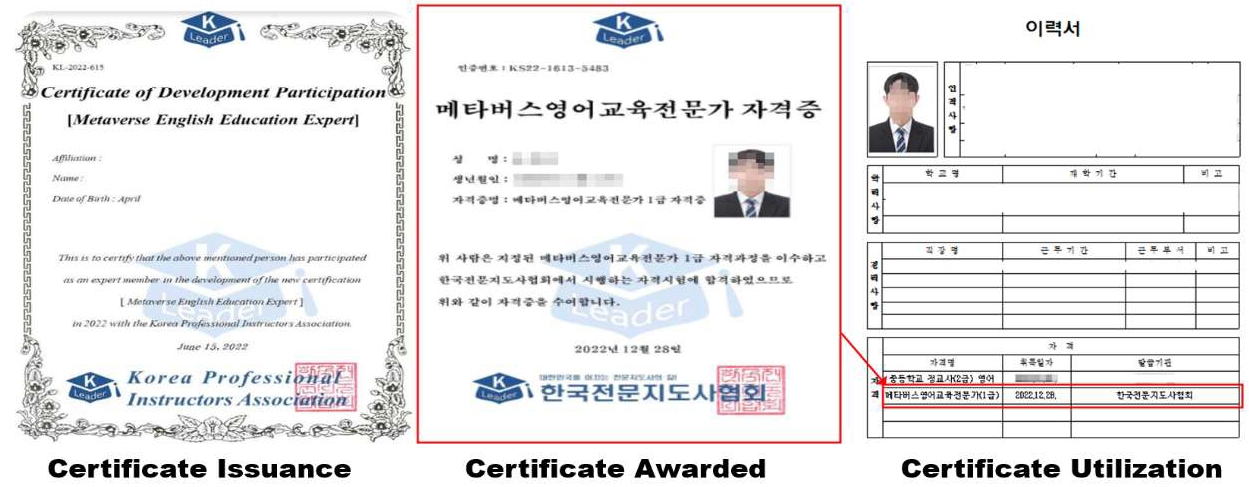
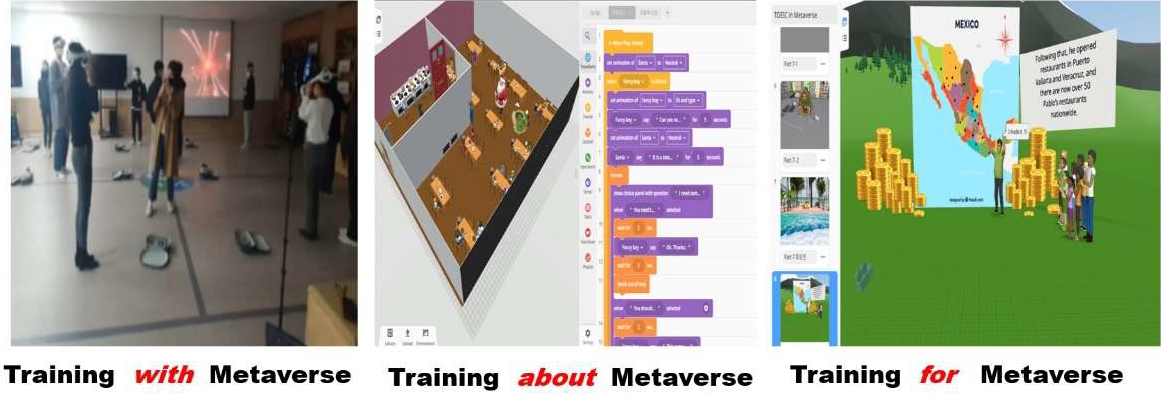
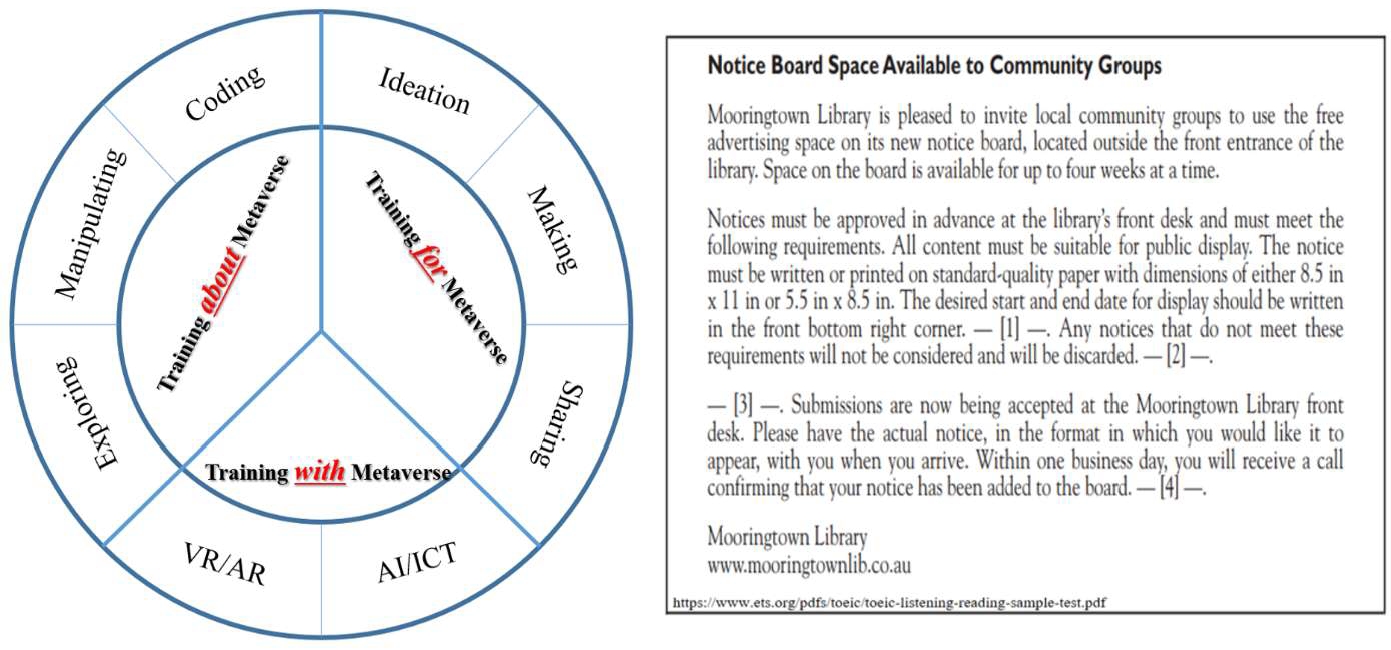
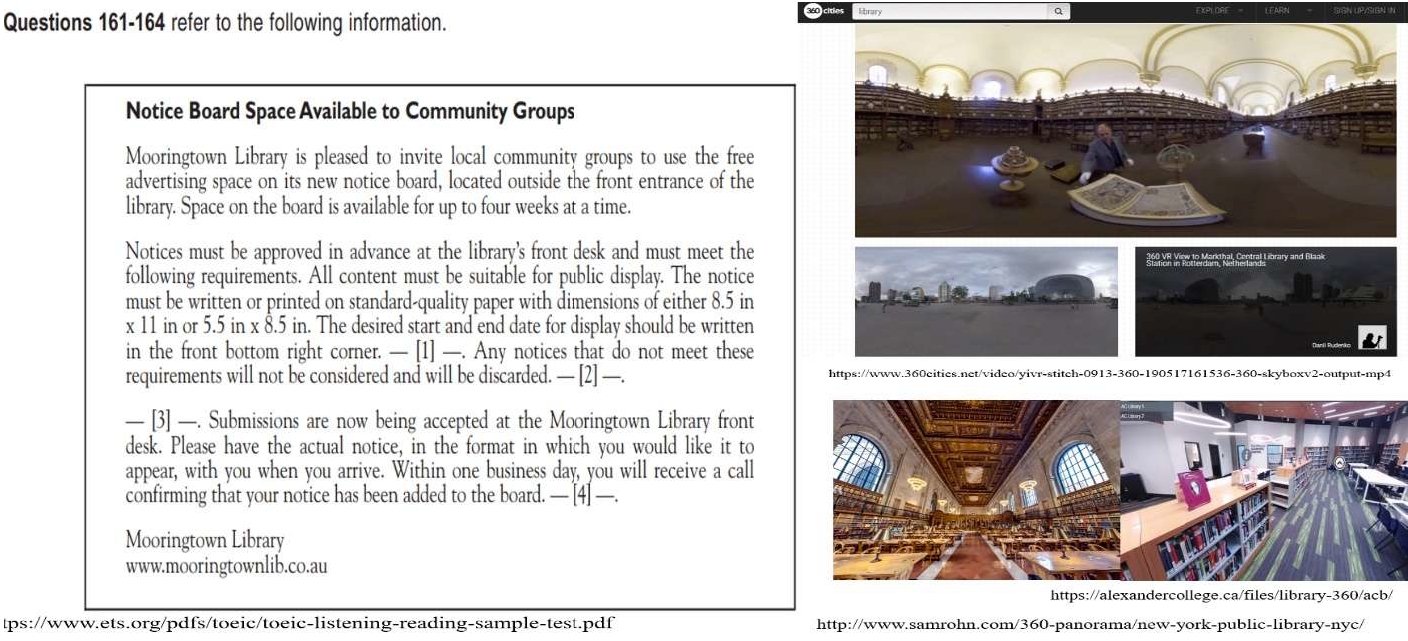

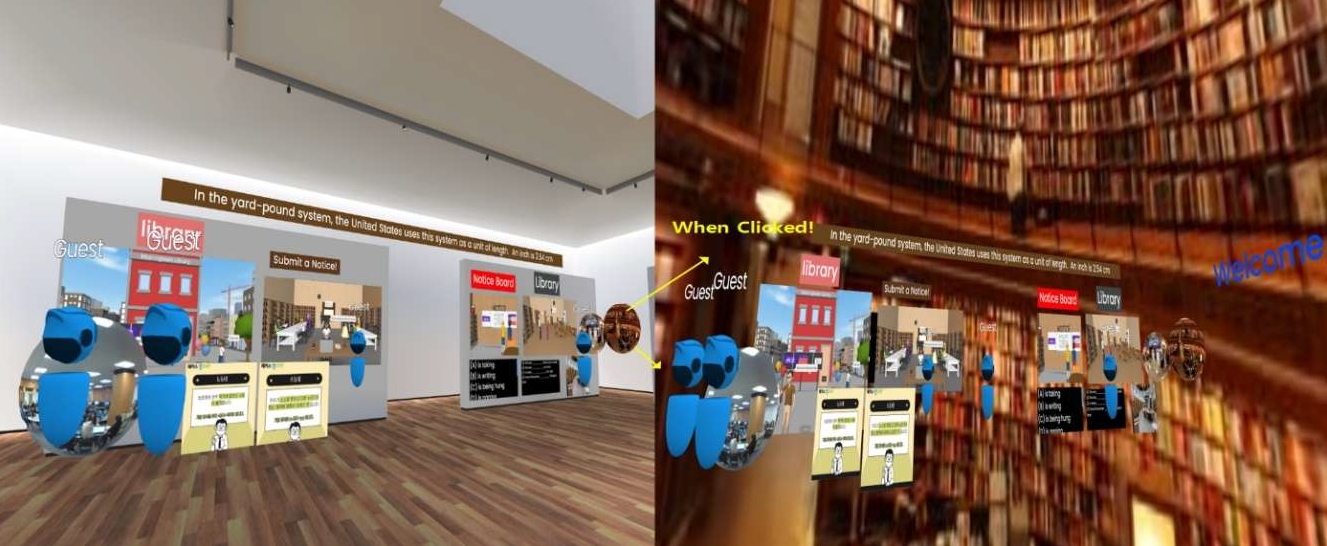
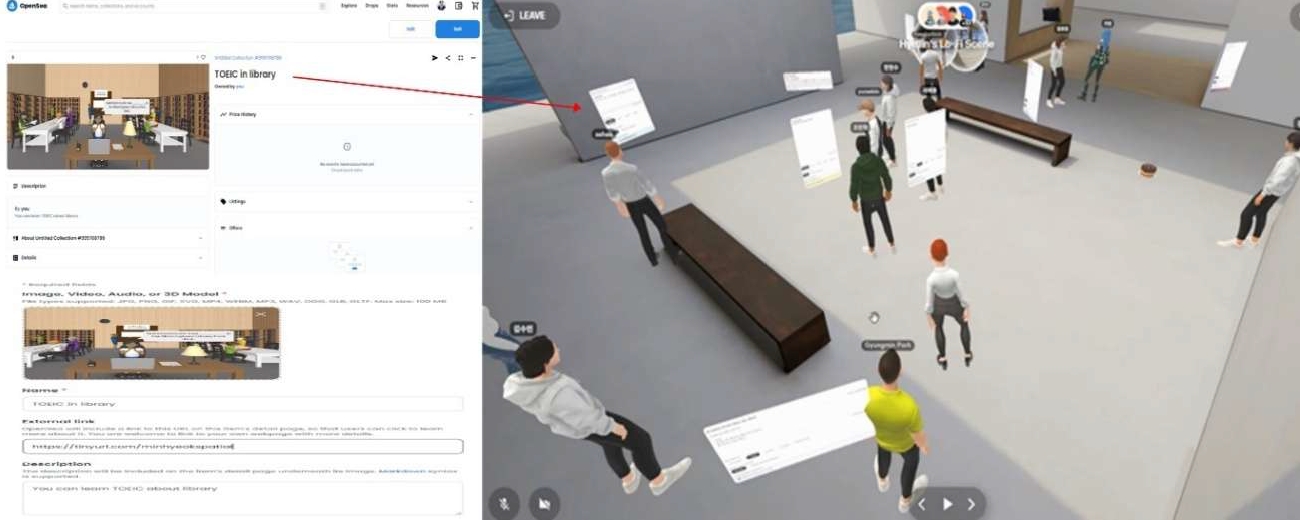

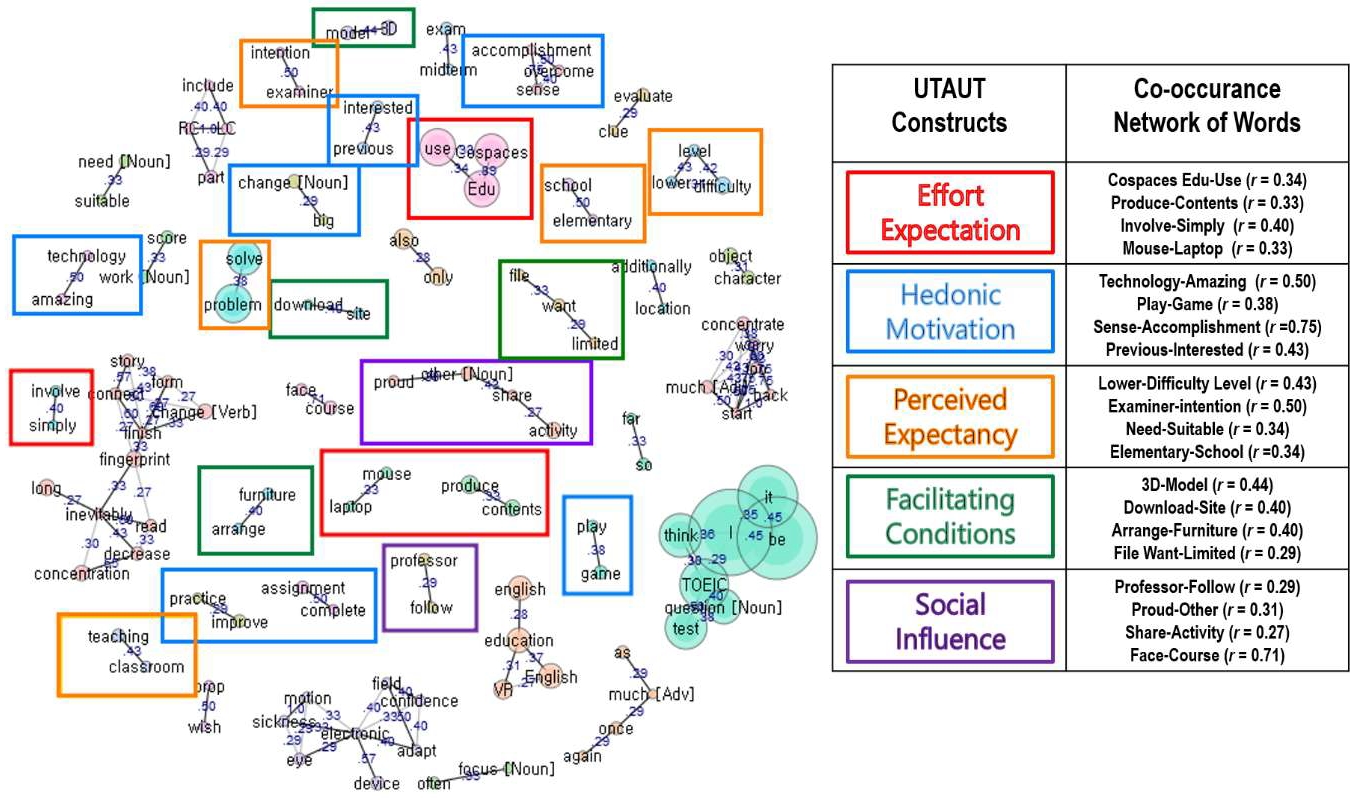
 PDF Links
PDF Links PubReader
PubReader ePub Link
ePub Link Full text via DOI
Full text via DOI Download Citation
Download Citation Print
Print






